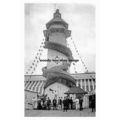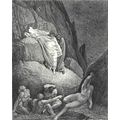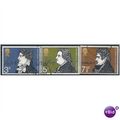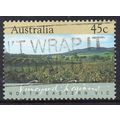Fragonard, Jean-Honre - A Young Girl Reading - art postcard
- Condition : Used
- Dispatch : 2 Days
- Brand : None
- ID# : 138251185
- Quantity : 1 item
- Views : 148
- Location : United Kingdom

- Seller : justthebook (+1703)
- Barcode : None
- Start : Fri 10 Apr 2015 04:11:39 (EDT)
- Close : Run Until Sold
- Remain : Run Until Sold
Checks/Cheques
 for 1 item(s) edit
for 1 item(s) edit
Shipping Calculator
More Listings from This Seller view all
Seller's Description
- Art Postcard
- Work of art title: A Young Girl Reading
- Artist (if known): Jean-Honre Fragonard (1732-1806)
- Media or other details: oil painting
- Publisher / Gallery: National Gallery of Art, Washington DC / The Pallas Gallery Ltd, London, c.1960s
- Postally used: no - brief note
- Stamp & postmark details (if relevant): no
- Size: modern
- Notes & condition details:
NOTES:
Size: 'Modern' is usually around 6in x 4in / 'Old Standard' is usually around 5 1/2in x 3 1/2in. Larger sizes mentioned, but if you need to know the exact size please ask.
All postcards are not totally new and are pre-owned. It's inevitable that older cards may show signs of ageing and use, particularly sent through the post. Any faults other than normal ageing are noted.
Stock No.: A651
------------------------------------------------
Postage & Packing:
Postage and packing charge should be showing for your location (contact if not sure).
No additional charges for more than one postcard. You can buy as many postcards from me as you like and you will just pay the fee above once. Please wait for combined invoice. (If buying postcards with other things such as books, please contact or wait for invoice before paying).
Payment Methods:
UK - PayPal, Cheque (from UK bank) or postal order
Outside UK: PayPal ONLY (unless otherwise stated) please. NO non-UK currency checks or money orders (sorry).
NOTE: All postcards are sent in brand new stiffened envelopes which I have bought for the task. These are specially made to protect postcards and you may be able to re-use them. In addition there are other costs to sending so the above charge is not just for the stamp!
I will give a full refund if you are not fully satisfied with the postcard.
----------------------------------------------
Text from the free encyclopedia WIKIPEDIA may appear below to give a little background information:
*************
Jean-Honoré Fragonard (French: [?ã ono?e f?agon??]; 5 April 1732[2] in Grasse – 22 August 1806 in Paris) was a French painter and printmaker whose late Rococo manner was distinguished by remarkable facility, exuberance, and hedonism. One of the most prolific artists active in the last decades of the Ancien Régime, Fragonard produced more than 550 paintings (not counting drawings and etchings), of which only five are dated. Among his most popular works are genre paintings conveying an atmosphere of intimacy and veiled eroticism.
Jean-Honoré Fragonard was born at Grasse, Alpes-Maritimes, the son of François Fragonard, a glover, and Françoise Petit.[1] Fragonard was articled to a Paris notary when his father's circumstances became strained through unsuccessful speculations, but showed such talent and inclination for art that he was taken at the age of eighteen to François Boucher. Boucher recognized the youth's rare gifts but, disinclined to waste his time with one so inexperienced, sent him to Chardin's atelier. Fragonard studied for six months under the great luminist, then returned more fully equipped to Boucher, whose style he soon acquired so completely that the master entrusted him with the execution of replicas of his paintings.
Though not yet a pupil of the Academy, Fragonard gained the Prix de Rome in 1752 with a painting of ""Jeroboam Sacrificing to the Golden Calf"", but before proceeding to Rome he continued to study for three years under Charles-André van Loo. In the year preceding his departure he painted the ""Christ washing the Feet of the Apostles"" now at Grasse Cathedral. On 17 September 1756, he took up his abode at the French Academy in Rome, then presided over by Charles-Joseph Natoire.
While at Rome, Fragonard contracted a friendship with a fellow painter, Hubert Robert. In 1760, they toured Italy together, executing numerous sketches of local scenery. It was in these romantic gardens, with their fountains, grottos, temples and terraces, that Fragonard conceived the dreams which he was subsequently to render in his art. He also learned to admire the masters of the Dutch and Flemish schools (Rubens, Hals, Rembrandt, Ruisdael), imitating their loose and vigorous brushstrokes. Added to this influence was the deep impression made upon his mind by the florid sumptuousness of Giovanni Battista Tiepolo, whose works he had an opportunity to study in Venice before he returned to Paris in 1761.
In 1765 his ""Coresus et Callirhoe"" secured his admission to the Academy. It was made the subject of a pompous (though not wholly serious) eulogy by Diderot, and was bought by the king, who had it reproduced at the Gobelins factory. Hitherto Fragonard had hesitated between religious, classic and other subjects; but now the demand of the wealthy art patrons of Louis XV's pleasure-loving and licentious court turned him definitely towards those scenes of love and voluptuousness with which his name will ever be associated, and which are only made acceptable by the tender beauty of his color and the virtuosity of his facile brushwork; such works include the Blind Man's Bluff (Le collin maillard),[3] Serment d'amour (Love Vow), Le Verrou (The Bolt), La Culbute (The Tumble), La Chemise enlevée (The Shirt Removed), and L'escarpolette (The Swing, Wallace Collection), and his decorations for the apartments of Mme du Barry and the dancer Madeleine Guimard. The portrait of Denis Diderot (1769) has recently had its attribution to Fragonard called into question.
A lukewarm response to these series of ambitious works induced Fragonard to abandon Rococo and to experiment with Neoclassicism. He married Marie-Anne Gérard, herself a painter of miniatures,[4] (1745–1823) on 17 June 1769 and had a daughter, Rosalie Fragonard (1769–1788), who became one of his favourite models. In October 1773, he again went to Italy with Pierre-Jacques Onézyme Bergeret de Grancourt and his son, Pierre-Jacques Bergeret de Grancourt. In September 1774, he returned through Vienna, Prague, Dresden, Frankfurt and Strasbourg.
Back in Paris Marguerite Gérard, his wife's 14-year-old sister, became his pupil and assistant in 1778. In 1780, he had a son, Alexandre-Évariste Fragonard (1780–1850), who eventually became a talented painter and sculptor. The French Revolution deprived Fragonard of his private patrons: they were either guillotined or exiled. The neglected painter deemed it prudent to leave Paris in 1790 and found shelter in the house of his cousin Maubert at Grasse, which he decorated with the series of decorative panels known as the Les progrès de l'amour dans le cœur d'une jeune fille,[5] originally painted for Château du Barry.[6]
Jean-Honoré Fragonard returned to Paris early in the nineteenth century, where he died in 1806, almost completely forgotten.
For half a century or more he was so completely ignored that Lübke in his History of Art (1873) omits the very mention of his name.[1] Subsequent reevaluation has confirmed his position among the all-time masters of French painting. The influence of Fragonard's handling of local colour and expressive, confident brushstroke on the Impressionists (particularly his grand niece, Berthe Morisot, and Renoir) cannot be overestimated. Fragonard's paintings, alongside those of François Boucher, seem to sum up an era.[7]
One of Fragonard's most renowned paintings is The Swing, also known as The Happy Accidents of the Swing (its original title), an oil painting in the Wallace Collection in London. It is considered to be one of the masterpieces of the rococo era, and is Fragonard's best known work.[8] The painting portrays a young gentleman concealed in the bushes, observing a lady on swing being pushed by her spouse, who is standing in the background, hidden in the shadows, as he is unaware of the affair. As the lady swings forward, the young man gets a glimpse under her dress. According to Charles Collé's memoirs[9] a young nobleman[10] had requested this portrait of his mistress seated on a swing. He asked first Gabriel François Doyen to make this painting of him and his mistress. Not comfortable with this frivolous work, Doyen refused and passed on the commission to Fragonard.[9]
On December 5, 2013, in Bonhams New Bond Street, London, Salerooms the Fragonard portrait of François-Henri duc d'Harcourt sold for £17,106,500 Sterling - US $28,058,081 - setting a world record price for the artist at auction. The previous record was £5,300,000 for a painting sold in London in 1999. The sum paid is also the highest price for an Old Master Painting sold at auction anywhere in the world in 2013. Bonhams' sale of paintings and sculpture from the renowned collection of the German philanthropist, the late Dr Gustav Rau, raised more than £19 million, with the proceeds benefiting the Foundation of the German Committee for UNICEF – for the children of the world. [11][12]
type=printed postcards
theme=artists signed
sub-theme=art
number of items=single
period=1945 - present
postage condition=unposted
Listing Information
| Listing Type | Gallery Listing |
| Listing ID# | 138251185 |
| Start Time | Fri 10 Apr 2015 04:11:39 (EDT) |
| Close Time | Run Until Sold |
| Starting Bid | Fixed Price (no bidding) |
| Item Condition | Used |
| Bids | 0 |
| Views | 148 |
| Dispatch Time | 2 Days |
| Quantity | 1 |
| Location | United Kingdom |
| Auto Extend | No |





![Van Gogh, Vincent - Sunflowers [4th] - National Gallery art postcard c.1960s](https://pic.ebid.net/upload_medium/2/7/0/1424731301-1918-150.jpg)













